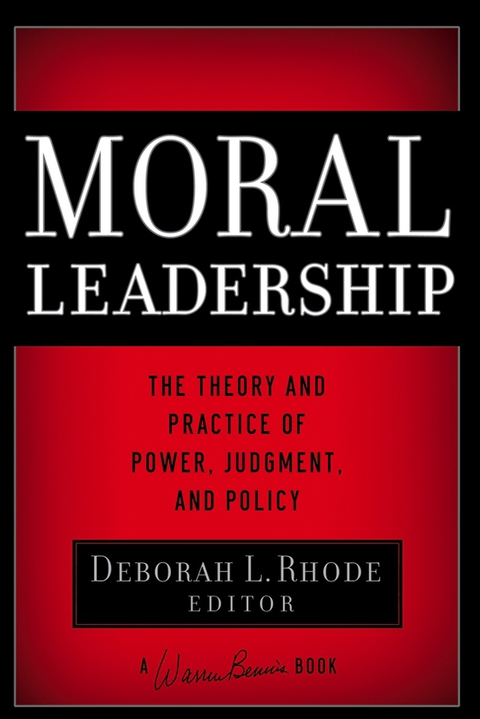Description
Efnisyfirlit
- Cover
- Title
- Copyright
- Dedication
- Foreword
- INTRODUCTION: WHERE IS THE LEADERSHIP IN MORAL LEADERSHIP?
- Moral Leadership Defined
- The Historical Backdrop and Current Need for Moral Leadership
- Doing Good and Doing Well: When Does Ethics Pay?
- Individual and Contextual Dimensions of Moral Conduct
- Strategies of Moral Leadership
- Promoting Moral Leadership
- Part One: ETHICAL JUDGMENT
- 1: MAKING SENSE OF MORAL MELTDOWNS
- The Ethical Dimension: Adversarial Ethics
- The Cultural Dimension: America’s Love Affair with Winners
- The Economic Dimension: The Feudal and Socialist Character of American Capitalism
- The Psychological Dimension: Cognitive Dissonance and Moral Compass
- Lessons for Leaders?
- 2: THREE PRACTICAL CHALLENGES OF MORAL LEADERSHIP
- Time
- Ambivalence
- Sense of Self
- Conclusion
- 3: ETHICAL JUDGMENT AND MORAL LEADERSHIP
- Ethical Fading
- Contextualizing Ethics
- The Need for Moral Courage
- Conclusion
- 4: MORALS FOR PUBLIC OFFICIALS
- A Priori Versus Conventional Ethics
- Individual-Level Morality Versus Institutional Arrangements
- Political Versus Legal and Regulatory Agency Control
- Division of Labor in Official Ethics
- Conflicts of Interest
- Three Potential Distortions
- Conclusion
- Part Two: THE PSYCHOLOGY OF POWER
- 5: THE PSYCHOLOGY OF POWER
- Locating Evil Within Particular People: The Rush to Judgment
- Blind Obedience to Authority: The Milgram Investigations
- Ten Steps to Creating Evil Traps for Good People
- On Being Anonymous: Deindividuation and Destructiveness
- Cultural Wisdom: How to Make Warriors Kill in Battle But Not at Home
- Moral Disengagement and Dehumanization
- Suspension of the Usual Cognitive Controls Guiding Moral Action
- The Hostile Imagination Created by Faces of the Enemy
- Can Ordinary Old Men Become Murderers Overnight?
- Educating Hatred and Destructive Imaginations
- The Stanford Prison Experiment: Institutional and Systemic Power to Corrupt
- The Evil of Inaction
- Torturers and Executioners: Pathological Types or Situational Imperatives?
- Suicide Bombers: Mindless Fanatics or Mindful Martyrs?
- Summing Up Before Moving On
- Understanding What Went Wrong in Abu Ghraib Prison
- Promoting Civic Virtue, Moral Engagement, and Human Goodness
- 6: TAMING POWER
- Candidate Variables for Taming Power
- Social-Structural Candidate Variables
- Taming Power: An Analogy and a Vision
- 7: POWER AND MORAL LEADERSHIP
- Status Endowed: The Rise of the Impulsive
- Power and the Pursuit of Self-Interest
- Power and the Ideology of Self-Interest
- Power and Solipsistic Social Environments
- Leveling Mechanisms
- Conclusions and Future Directions
- Part Three: SELF-SACRIFICE AND SELF-INTEREST
- 8: ORCHESTRATING PROSOCIAL MOTIVES
- Motives as Goal-Directed Forces
- Four Types of Prosocial Motivation
- Conflict
- Orchestration
- Conclusion
- 9: SELF-SACRIFICE AND SELF-INTEREST
- Adherence to Rules
- Models of Human Motivation
- Alternative Models
- Evidence for the Value-Based Approach
- Procedural Justice
- Implications for Moral Leadership
- Defining Procedural Justice
- Conclusion
- Part Four: SERVING THE PUBLIC THROUGH THE PUBLIC SECTOR
- 10: STRATEGIC PHILANTHROPY AND ITS MALCONTENTS
- The Idea of Strategic Philanthropy
- Two Qualifications
- In Defense of Strategic Philanthropy
- The Critique of Venture Philanthropy and the Value of General Operating Support
- 11: ETHICS AND PHILANTHROPY
- Funding Ethics
- Foundation Accountability
- Philanthropy and Public Goods
- Part Five: MORAL LEADERSHIP
- 12: EXERCISING MORAL COURAGE
- Who Are the Management Students?
- Unlearning the Myths of the Inexperienced
- Doing the Right Thing: Powerlessness Corrupts
- The Role of Business as a Societal Force
- Moral Leadership: Expanding the Zone of Acceptability
- 13: PERSPECTIVES ON GLOBAL MORAL LEADERSHIP
- What Is Global Moral Leadership?
- Who Is a Global Moral Leader?
- Characteristics of a Global Moral Leader
- What Are Global Moral Values?
- Conclusion
- Notes
- Acknowledgments
- About the Authors
- Index
- End User License Agreement





